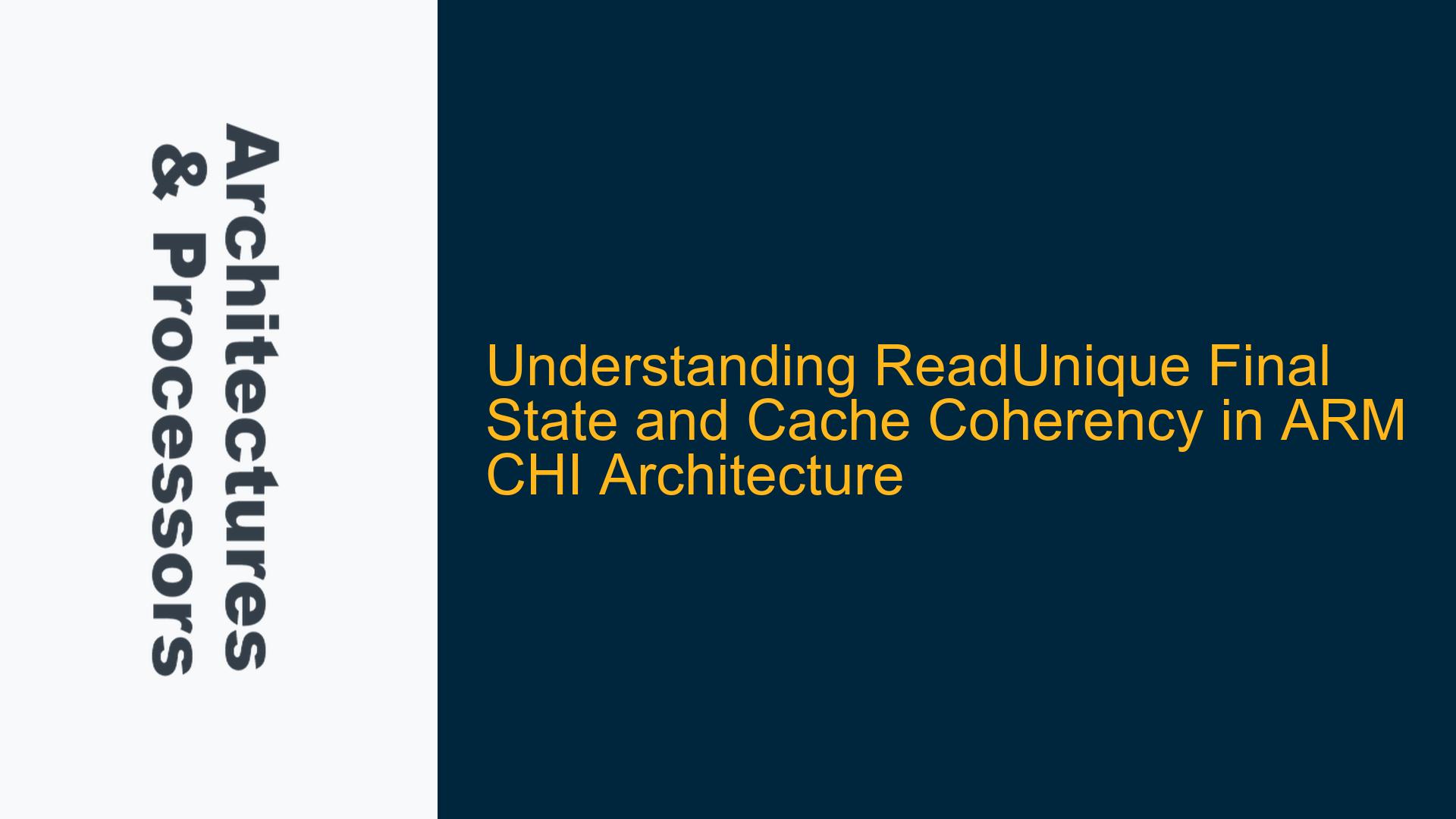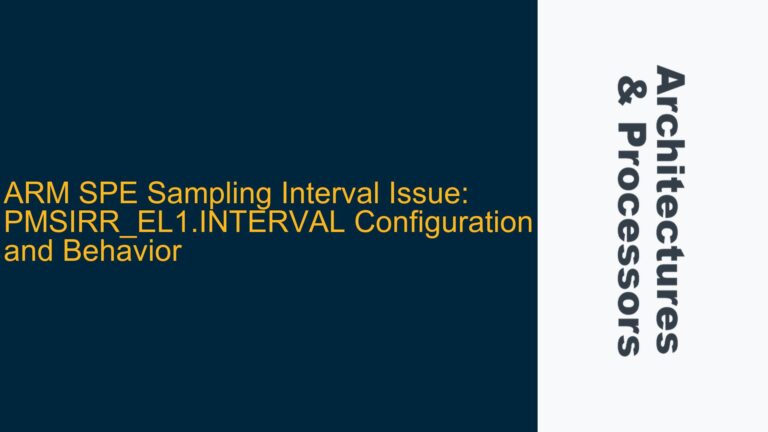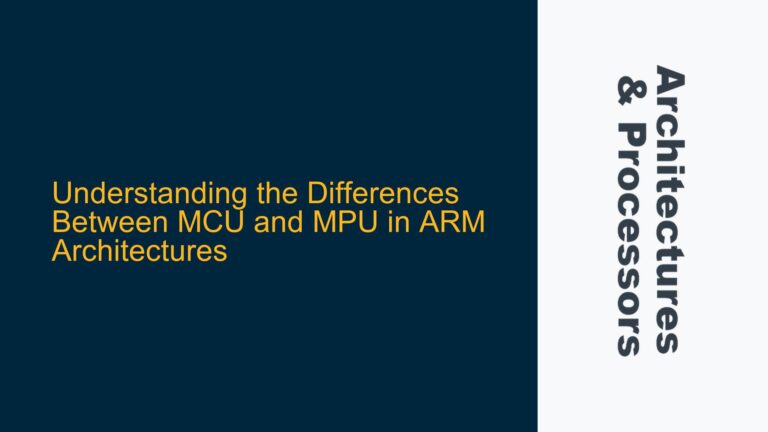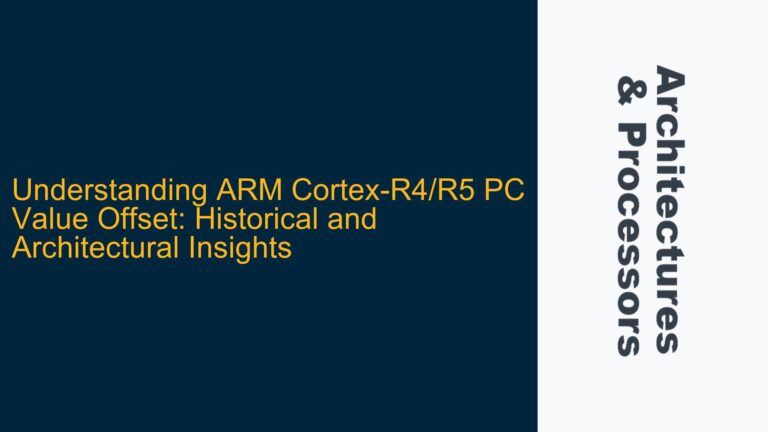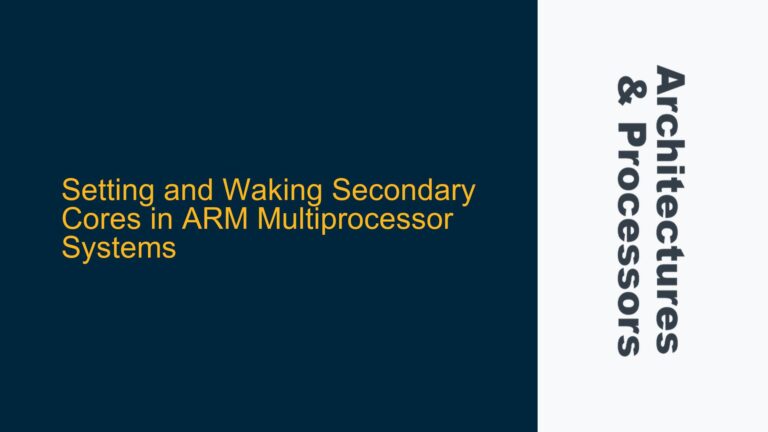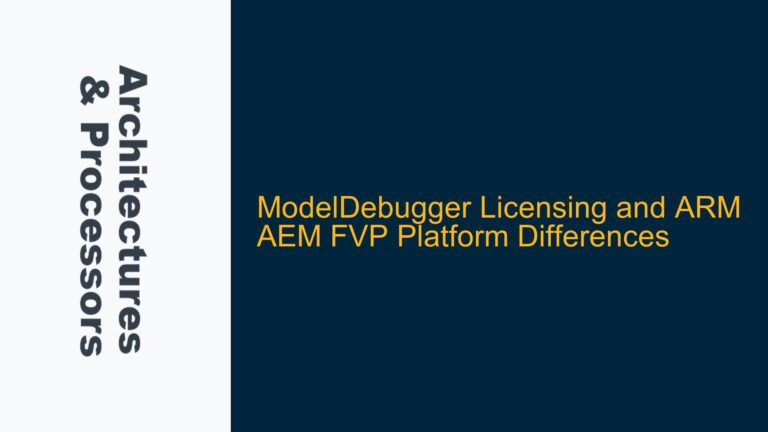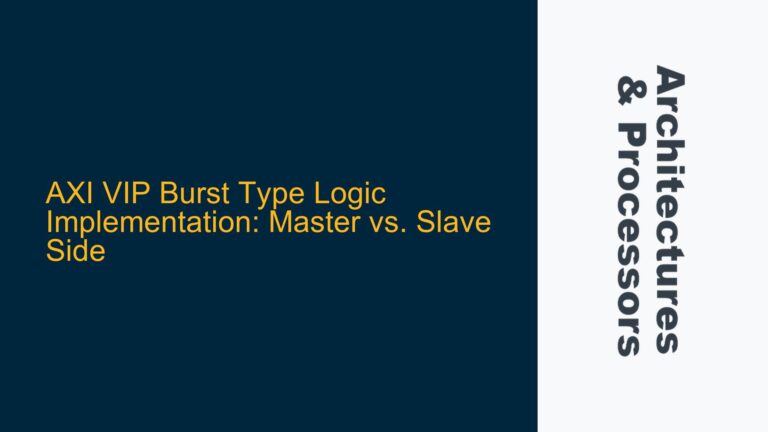ARM CHI ReadUnique Final State: UC vs. UD and Cache Coherency Implications
The ARM Coherent Hub Interface (CHI) protocol is a critical component of modern ARM-based systems, enabling efficient cache coherency and data sharing across multiple request nodes (RNs) and home nodes (HNs). One of the key transactions in the CHI protocol is the ReadUnique operation, which is used by a requester to obtain exclusive ownership of a cache line with the intent to perform a store operation. However, the final state of the cache line after a ReadUnique transaction—whether it transitions to UniqueClean (UC) or UniqueDirty (UD)—has raised questions about its implications for cache coherency, performance, and potential livelock scenarios.
This post delves into the intricacies of the ReadUnique operation, its final state behavior, and the underlying architectural decisions that govern its implementation. We will explore the technical rationale behind the UC and UD states, analyze potential causes of confusion, and provide detailed troubleshooting steps to address related issues.
ReadUnique Final State Behavior: UC vs. UD and Architectural Rationale
The ReadUnique transaction is designed to allow a requester (RN) to obtain exclusive ownership of a cache line, typically in preparation for a store operation. According to the ARM CHI specification, the final state of the cache line after a ReadUnique operation can be either UniqueClean (UC) or UniqueDirty (UD), depending on whether the PASS_DIRTY attribute is set. This behavior is often misunderstood, leading to questions about why the final state is not fixed to UD, especially when the intent is to perform a store.
Key Concepts and Definitions
- UniqueClean (UC): The cache line is exclusively owned by the requester, but its contents have not been modified. The data is consistent with the home node (HN) or other caches in the system.
- UniqueDirty (UD): The cache line is exclusively owned by the requester, and its contents have been modified. The data is not consistent with the home node or other caches, and the requester is responsible for eventually writing it back.
- PASS_DIRTY: An attribute in the CHI protocol that indicates whether the cache line being transferred is dirty (modified) in the source cache. If PASS_DIRTY is set, the final state of the cache line in the requester will be UD; otherwise, it will be UC.
Why the Final State is Not Fixed to UD
The ARM CHI protocol does not mandate that the final state of a cache line after a ReadUnique operation must be UD. This design choice is rooted in several architectural considerations:
-
Store Operation Timing: The ReadUnique transaction is initiated when a requester intends to perform a store operation, but the protocol does not require the store to be performed immediately or atomically. The requester may delay the store for various reasons, such as waiting for additional data or resolving dependencies. During this delay, the cache line remains in the UC state, ensuring that the data is consistent with the home node.
-
Data Consistency: If the cache line is received in a UC state (i.e., PASS_DIRTY is not set), the requester can safely retain the original data without risking inconsistency. The ReadUnique transaction ensures that the requester has exclusive ownership, preventing other requesters from modifying the data. If the requester later performs a store operation, the cache line will transition to UD.
-
Performance Optimization: Allowing the cache line to remain in the UC state reduces unnecessary writebacks and cache invalidations. If the requester does not perform a store operation, the cache line can be discarded or returned to the home node without incurring the overhead of a writeback.
-
Exclusive Sequences: In some cases, the requester may use ReadUnique as part of an exclusive sequence (e.g., load-linked/store-conditional). In these scenarios, the final state of the cache line depends on whether the store operation succeeds. If the store fails, the cache line remains in the UC state, preserving the original data.
Example Scenario: ReadUnique with UC Final State
Consider a scenario where RN0 initiates a ReadUnique transaction to obtain exclusive ownership of a cache line. The cache line is currently in the Shared (S) state in RN1’s cache. The home node (HN) coordinates the transaction, invalidating the cache line in RN1 and transferring it to RN0. If the cache line is clean (i.e., not modified in RN1), the final state in RN0 will be UC. RN0 can now perform a store operation, transitioning the cache line to UD, or retain the cache line in the UC state if no store is performed.
Potential Causes of Confusion and Misinterpretation
The behavior of the ReadUnique final state can lead to confusion, particularly when developers expect the cache line to transition to UD immediately after the transaction. Below are some common causes of misinterpretation and their underlying reasons:
-
Assumption of Immediate Store: Developers may assume that the ReadUnique transaction implies an immediate store operation, leading to the expectation that the cache line should transition to UD. However, the CHI protocol explicitly allows for delayed stores, and the final state depends on whether the store is performed.
-
Misunderstanding PASS_DIRTY: The role of the PASS_DIRTY attribute is often overlooked. If PASS_DIRTY is not set, the cache line will remain in the UC state, even if the requester intends to perform a store. This behavior is consistent with the protocol’s goal of minimizing unnecessary writebacks.
-
Livelock Concerns: A recurring concern is the possibility of livelock, where multiple requesters repeatedly invalidate each other’s cache lines without making progress. While this scenario is theoretically possible, the CHI protocol includes mechanisms to prevent livelock, such as prioritization and fairness policies.
-
Exclusive Sequences: The use of ReadUnique in exclusive sequences (e.g., load-linked/store-conditional) can complicate the final state behavior. Developers may not account for the possibility of the store operation failing, leaving the cache line in the UC state.
Troubleshooting Steps, Solutions, and Fixes
To address issues related to the ReadUnique final state and ensure correct implementation of the ARM CHI protocol, follow these detailed troubleshooting steps:
Step 1: Verify ReadUnique Usage and Intent
- Review the Code: Examine the code to ensure that ReadUnique is used only when exclusive ownership is required for a store operation. Verify that the store operation is performed promptly after the ReadUnique transaction completes.
- Check PASS_DIRTY: Confirm that the PASS_DIRTY attribute is set correctly based on the source cache’s state. If the cache line is dirty in the source cache, PASS_DIRTY should be set to ensure the final state is UD.
Step 2: Implement Proper Cache Management
- Cache Invalidation: Ensure that cache invalidations are performed correctly when a ReadUnique transaction completes. This prevents stale data from being retained in other caches.
- Writeback Policy: Configure the writeback policy to minimize unnecessary writebacks. If the cache line remains in the UC state, it can be discarded or returned to the home node without a writeback.
Step 3: Address Livelock Concerns
- Prioritization: Implement prioritization policies to ensure that one requester can complete its store operation without being repeatedly invalidated by other requesters.
- Fairness Mechanisms: Use fairness mechanisms to prevent a single requester from monopolizing the cache line. This ensures that all requesters have an opportunity to perform their store operations.
Step 4: Debug Exclusive Sequences
- Load-Linked/Store-Conditional: If using ReadUnique in exclusive sequences, ensure that the store-conditional operation is handled correctly. If the store fails, the cache line should remain in the UC state.
- Error Handling: Implement error handling to detect and resolve cases where the store operation fails, preventing indefinite retries.
Step 5: Monitor and Analyze System Behavior
- Performance Counters: Use performance counters to monitor cache coherency transactions and identify potential bottlenecks or livelock scenarios.
- Trace Analysis: Capture and analyze traces of CHI transactions to verify that the final state behavior aligns with the protocol specification.
Example Fix: Ensuring Immediate Store After ReadUnique
To prevent the cache line from remaining in the UC state indefinitely, modify the code to perform the store operation immediately after the ReadUnique transaction completes. For example:
// Pseudocode for ReadUnique with immediate store
cache_line = perform_readunique(address);
if (cache_line.state == UC) {
perform_store(address, new_data);
cache_line.state = UD;
}
This ensures that the cache line transitions to UD as expected, avoiding potential issues with delayed stores.
By understanding the architectural rationale behind the ReadUnique final state and following the troubleshooting steps outlined above, developers can ensure correct and efficient implementation of the ARM CHI protocol, avoiding common pitfalls and optimizing system performance.
